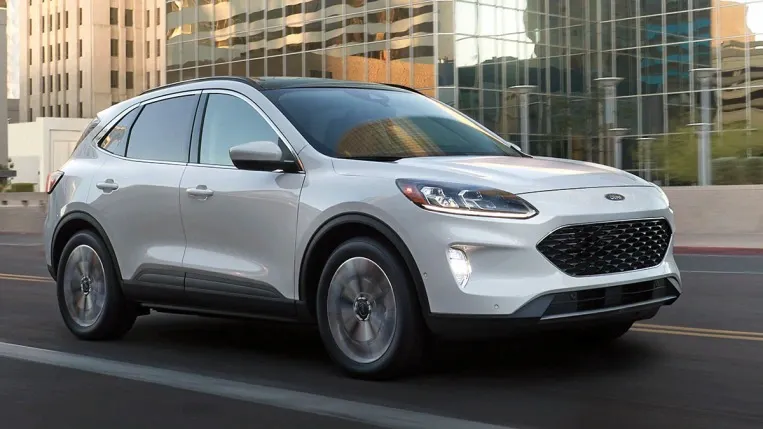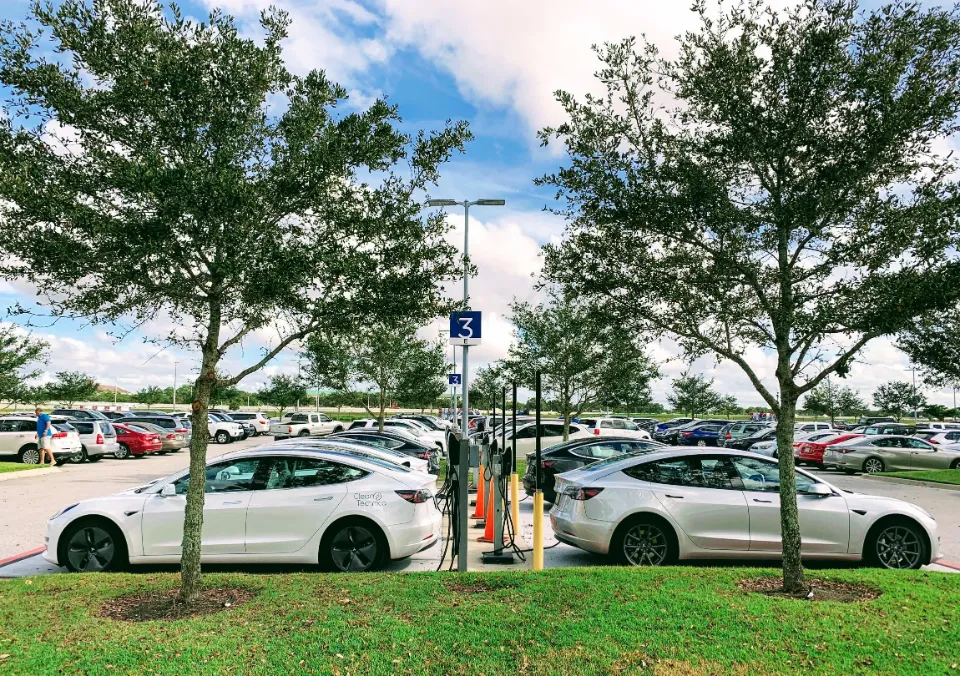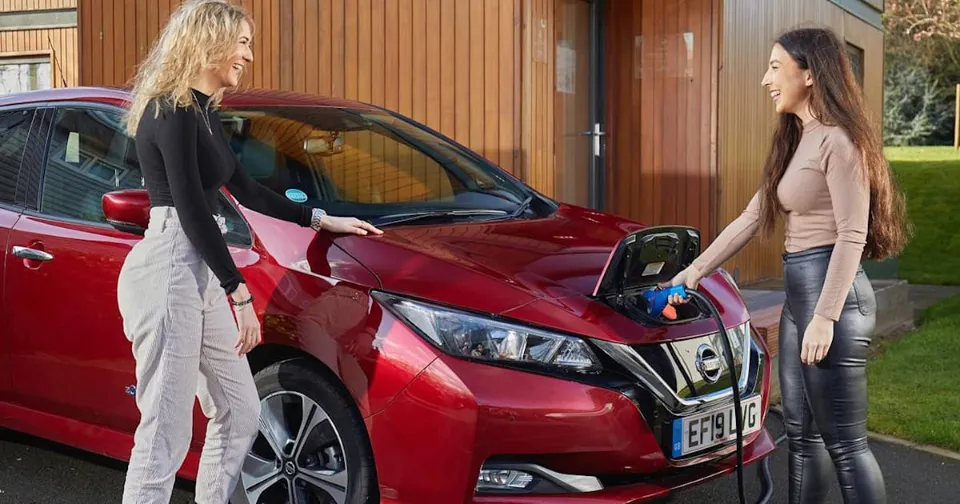What are Hybrids Vs. Plug-in Hybrids, and how do the two types of vehicle compare?
The main difference when looking at hybrids vs plug-in hybrids is that the former is powered by both a petrol-fuelled internal combustion engine and a battery-powered electric motor that can work either independently or simultaneously, whereas the latter is powered chiefly by an electric motor and will only use its internal-combustion engine as a back-up should your electric motor’s battery run out of juice.
Conventional Hybrids: How They Work
While the first modern HEV was Honda’s bullet-shaped, two-seat Insight, which went on sale in 2000, Toyota’s Prius quickly surpassed it to become as associated with the term “hybrid” as Google is with internet searches. Virtually every major manufacturer offers HEV cars, SUVs, and trucks. Conventional hybrids don’t require a recharging station because their small batteries are kept charged while you drive using their gasoline engines. Due to their ability to recapture energy while braking, all of these HEVs offer significantly better fuel efficiency than their nonhybrid, gas-engine counterparts in stop-and-go city driving (albeit at the expense of some complexity and price increases). However, during constant highway cruising, hybrids rarely achieve significantly better mileage.
The only truly temporary, if any, ability to drive solely on electricity is typically provided by HEVs, which lack the ability to be plugged in to recharge their battery packs.
A hybrid car runs on both gas and electricity. The face of environmentally friendly driving options has been drastically altered by this technology. Read on to find out more about Hybrid Car Batteries.
Editor’s tip: Just like with all cars, your Prius’ battery will eventually need to be replaced. But when will that be? How long do Toyota Prius batteries last?

Plug-In Hybrids: More Range, More Cost
Many manufacturers have gone a step further and added larger batteries to their hybrid vehicles. These batteries are recharged by plugging them into either a 240-volt charging unit or a standard 120-volt household outlet. The Prius Prime, which has a 25-mile electric-only range rating, can be recharged in about 5.5 hours using 120-volt household current and in about two hours using a 240-volt charger.
A plug-in hybrid vehicle’s ability to charge its batteries in advance allows it to run entirely on electricity while using no fuel. Many plug-ins have a range of 25 miles or more. However, a PHEV’s ability to save fuel necessitates a larger battery pack to supply those miles of electric-only travel before its internal combustion engine engages to share the load. The price is higher than a typical hybrid due to this as well as additional hardware and software. For instance, a Prius plug-in hybrid costs several thousand dollars more than a standard Prius.
However, a plug-in hybrid never has to be plugged in and will continue operating in “hybrid” mode (using a combination of the gas engine and the electric motor or motors) indefinitely, as long as you keep filling up the gas tank.
Here is a quick look at Hybrid Vs Gas Car. A gas-powered car only has a traditional gas engine, while a hybrid vehicle also has an electric motor. Since hybrid vehicles can switch between their gas and electric motors while being driven, they typically have higher fuel efficiency than their gasoline-powered counterparts.

Hybrid Vs. Plug-in Hybrid: Benefits
Standard Hybrid Vehicles
There are many benefits to a hybrid vehicle over a conventional model. Hybrid vehicles firstly increase fuel economy by alternating between their electric engine at slower speeds and their gas engine at faster speeds. For drivers in Land O’ Lakes who don’t want to rely on home charging, conventional hybrid vehicles are a great alternative. For continued high fuel economy ratings, you won’t need to stop and recharge the internal batteries because the gas engine charges the battery as you drive.
Editor’s Advice: How Much Does a Hybrid Battery Cost? Compared to conventional gasoline-only vehicles, hybrids use different batteries, and their prices range from $1,000 to $8,000. The final cost you’ll incur is determined by the make and model of your car as well as whether you choose a new or refurbished battery.
Plug-In Hybrid Models
Plug-in hybrid vehicles also use an electric motor and a gas engine, but their energy distribution is different from that of conventional hybrid vehicles. When the electric motor in a plug-in hybrid runs out of power, the gasoline engine will take over.
Rather than having two engines working simultaneously, plug-in hybrid vehicles use the gasoline engine as a “backup” for when the electric engine is out of charge. The vehicle’s electric range is the maximum distance it can go while running solely on the battery. When that threshold is reached, though, you’ll have to plug your car in to recharge the battery.
If you’re searching for a vehicle that will help you save significantly on gas, then a plug-in hybrid like the Honda Clarity Plug-In Hybrid is an excellent choice. Many plug-in hybrid cars offer the range required to commute on pure battery power or run errands around town because they can be pre-charged, allowing you to save gas for longer trips.
Related: How Long Do Hybrid Car Batteries Last? About 100,000 miles should be covered by the majority of hybrid batteries. Some owners are able to increase this number to 200,000 with excellent maintenance.
Plug-in Hybrids Have Bigger Batteries and More Electric Range
The difference between a hybrid and plug-in hybrid is that the plug-in hybrid electric vehicle (PHEV) furthers the hybrid’s fuel economy advantage by installing a higher-capacity battery—and in some cases a more powerful electric motor—to extend the battery-only driving distance. There are many options, and a few models, like the Toyota Prius and RAV4, Kia Niro, and Ford Escape, come in both hybrid and more efficient plug-in hybrid variations.
In conventional hybrids, which some of which can travel about a mile on electricity alone, a battery pack stores electrical energy obtained during regular driving, so there is no plugging in to recharge. The gas engine recharges the battery, and it also receives a recharge from energy converted to electricity when the vehicle slows down (a process known as regenerative braking). (Are hybrid cars good for long distance driving? How far a typical hybrid can travel will be covered in this blog.)
The electric driving range varies among plug-in models, with many offering 20 to 40 miles before the car automatically enters hybrid mode and fires up the gas engine. The Environmental Protection Agency (EPA) rates the Toyota RAV4 Prime, the plug-in model, to travel 42 miles on its larger battery (18 kilowatt-hours (kWh) versus 1.6 kWh for the RAV4 Hybrid). The daily commute for many drivers is 42 miles, which they can complete without ever starting their gas engine.
You may want to know: We’ll examine the four main types of hybrid vehicles in this article and discuss what makes each one distinctive. They are Mild Hybrids, Full Hybrids, Plug-In Hybrids, and Electric Vehicles with Range Extender Hybrids. Continue reading.
Plugging in Provides Savings at the Pump
A plug-in hybrid can be recharged while it is parked by plugging it into an electrical outlet or a 240-volt circuit. The RAV4 Prime needs about 12 hours to fully charge on 120 volts, but only 4.5 hours on 240 volts (or 2.5 hours with the optional 6.6 kilowatt onboard charger).
The greatest fuel savings come from pinning whenever possible. The EPA predicts that the Ford Escape plug-in can save its owner an extra $3,000 over the course of five years compared to the non-plug-in hybrid model for someone who drives 15,000 miles annually. The RAV4 Prime could save $2,750 in fuel costs over the course of five years compared to the regular hybrid model.*
Editor’s Tip: Here’s the answer to “How Do Plug-In Hybrid Electric Cars Work?” In plug-in hybrid electric vehicles (PHEVs), an internal combustion engine (ICE) is powered by another fuel, such as gasoline, while an electric motor is powered by batteries. The ICE, a wall outlet, a charging device, or regenerative braking can all be used to charge PHEV batteries. Usually, the car runs on electricity until the battery is almost completely gone, at which point it switches over to using ICE.
Tax Credits Reduce the Phev Price Premium
Plug-in models are more expensive than their standard hybrid counterparts—over $5,000 more expensive in the case of the Ford Escape—but a federal tax credit of up to $7,500 is available to help offset the price difference. According to current tax law, the credit is reduced as a manufacturer sells more qualifying vehicles.
Suggested reading: Thankfully, the market for used hybrids is rich enough for us to pick and choose those with the highest safety and reliability ratings, plus low overall cost of ownership. The best used hybrid cars are those listed here.
Summary: Hybrids Vs. Plug-in Hybrids
The major difference between hybrid and plug-in hybrid cars is given away by their names – plug-in hybrid vehicles are charged by plugging them into an outlet, while hybrid vehicles do not need to be plugged in, and, in fact are not able to be plugged in. The more convenient choice is to not have to charge a vehicle because it can take hours to fully charge a battery. Here are the differences:
- While the gas engine and electric motor in a hybrid are always running simultaneously, plug-in hybrids can travel a short distance solely on electricity.
- While the battery in a plug-in hybrid needs to be charged from an outlet or charger, the battery in a hybrid is charged by the gas engine.
READ ABOUT





